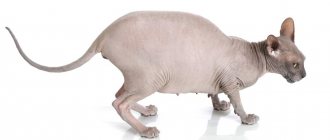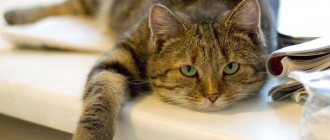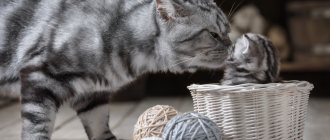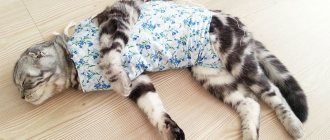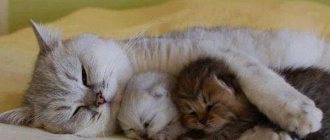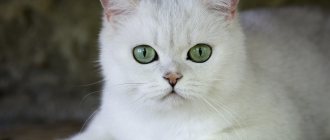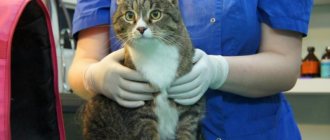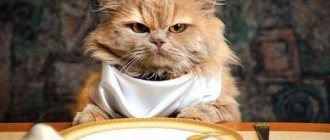Every owner of a mustachioed pet should know how much water a cat should drink per day. Failure to comply with the norm recommended by veterinarians is dangerous and can lead to unpleasant consequences. To avoid them, it is important to calculate your actual fluid intake and bring it to the required level using a few tricks.
What affects water consumption
The daily water requirement for a cat is individual. With age, due to a slowdown in metabolic processes, it gradually decreases. A larger deviation is typical for pregnant pets - when carrying kittens, part of what they drink is transformed into the amniotic sac and milk.
In addition to age and physiological condition, it is necessary to take into account several more important factors: the type of feeding, the mobility and size of the animal, as well as the climatic conditions in the place of residence.
Nutrition
When feeding natural food, up to 75% of the liquid comes from food. The cat gets moisture from fermented milk products, vegetables, herbs, cereals, meat and fish.
With dry granules, the animal receives only 10% liquid. To maintain water balance and comfortable digestion of food, you need to drink a portion that is 2 times the volume of what you eat. Otherwise, an increased concentration of proteins and minerals may result in the formation of stones (kidney or bladder stones).
Body type and activity
The greater the mass of a mustachioed pet, the less its norm per kilogram. Calculation formulas for a miniature cat weighing only 2 kg and a large cat whose weight exceeds 10 kg will be different. In absolute terms, an animal with a powerful physique will have to drink more, but in relative terms, the need will be higher for those who are smaller.
In addition to size, daily activity is also important. Cats that roam freely on the street expend more energy and moisture reserves than those that spend almost the entire day on the couch.
Ambient temperature
Increased human sweating plays an important role in thermoregulation. Thanks to sweat, people can tolerate heat much more easily than pets. In the cat family, sweat glands are located on the pads of their paws - this is why wet marks from cat paws appear on the floor in the summer.
To lower their body temperature, mustachioed pets lick themselves more often, covering their coat with copious amounts of saliva. When it evaporates, a short-term cooling effect occurs. Accordingly, the cat drinks more than normal to produce a copious amount of saliva.
The higher the ambient temperature and the drier the air, the faster moisture is lost. In damp and cool weather the situation is reversed.
General rules
So, it is absolutely normal for cats to drink little but often. If you are thinking about how to get your cat to drink more water, start by calculating its daily fluid intake and compare this figure with the amount that disappears from the bowl. In hot weather, this observation is more difficult to make because the water evaporates quickly. There is no need to be alarmed if your cat drinks water with its paw, but make sure that:
- The bowl is not too narrow - the whiskers should not curl when the cat drinks.
- The bowl is too deep - it is better to use wide and shallow bowls.
- The cat does not experience pain when bending its neck.
- The cat's teeth are healthy.
- The water is not too cold.
- The water is clean.
At any time of the year, especially in winter and summer, the cat should have unhindered access to water. The volume of the drinking bowl should exceed the animal's daily fluid intake by at least 50%. The bowl should be washed every day, 2-3 times a day in summer. These conditions are especially relevant for animals kept on dry food , since the granules swell after ingestion, and provoke extreme thirst.
If you are going on a trip, stock up on clean water to give your cat water on the road. If this moment is missed, do not even think about giving your cat water collected from a puddle or pond. Most likely, such a decision will lead to dysbiosis and infection with worms. It is worth understanding that water from puddles and standing reservoirs may contain eggs of very dangerous helminths.
Important! Do not allow your cat to drink water from the aquarium or toilet. In the first case, there is a high chance of a bacterial outbreak (the microflora of the aquarium is very specific), in the second, comments are unnecessary.
Why is water so important to animals?
Despite the fact that up to 70% of a mammal's body consists of water, it constantly needs to be replenished from the outside. It is found in the blood, muscles, bones and is involved in the most important internal processes:
- delivers oxygen to cells;
- maintains a constant body temperature;
- lubricates joint tissues and mucous membranes;
- dissolves nutrients, facilitating the digestion and absorption of food;
- removes toxins from the body that accumulate in waste products;
- humidifies the air in the lungs.
Prolonged lack of moisture leads to a reduction in urination and increased urine concentration. This is fraught with the development of urolithiasis, cystitis and kidney pathologies. If you do not give your pet the recommended amount of fluid, he may get sick or die from dehydration.
Dehydration in cats: causes, signs and remedies
Cats, like other animals, endure the lack of water much harder than the lack of food. Thus, zoologists know of cases of mass death of cats in the African savannah during the dry period, when there is no rain, and most natural reservoirs simply dry up.
A well-fed domestic cat can go without food for 2 weeks, but one completely deprived of water dies on the 3rd day.
Why doesn't the cat drink water ? Your pet may suddenly refuse to drink water if it:
- Got sick . Seeing that the water level in the drinking bowl is not decreasing, the owner should take a close look at the animal and its natural functions. Lethargy, fever, discharge from the nose and eyes, diarrhea, and vomiting can be the cause of a dangerous infectious disease. Urolithiasis is accompanied by severe pain, urine is released little by little, acquires an unpleasant odor and contains blood. If your cat tries to drink water but begins to wince and lick painfully, then she may have problems with her teeth, gums, lining of the mouth, throat or esophagus.
- Exposed to stress . Emotional stress can affect the cat’s condition and force him to sit all day in a rescue house or a dark corner. Anything can upset the mustachioed-striped one, from the visit of noisy guests to loud noise in the yard.
- Is in a state of sexual hunting . Individuals experiencing “hormonal storms” may forget about sleep, food and water. In this case, other signs will be obvious, including characteristic postures and vocal accompaniment.
- Dissatisfied with the quality of water or dishes . Cats are extraordinary neat people with a delicate sense of smell, so they are quite capable of refusing to drink from a dirty bowl. Sometimes cats don't like the smell of plastic. In addition, a container that is too deep and narrow can create discomfort for the sensitive whiskers on the face, which rest against hard walls. That is why “cat dishes” need to be thoroughly washed 2-3 times a day, and wide and shallow metal or porcelain bowls should be used for feeding and watering.
Norms of fluid intake per day under different conditions
Felinologists have established that the daily water requirement for an adult cat is 20-40 ml per 1 kg of weight. The indicator is adjusted up or down depending on the previously listed factors. For kittens, the estimated amount of ml is increased 2-3 times.
E. G. Grünbaum, German author of the work “Nutrition and Diet of Dogs and Cats,” suggests using more accurate indicators:
- 31.5 ml per 1 kg – for adult animals;
- 77 ml per 1 kg – for pets under one year old.
This option is more convenient for calculations, but less accurate. Cats of the same weight, but with different types of feeding, will have to be given water in different proportions. Otherwise, an animal that eats only “drying” may suffer from stones in the bladder.
Water comes not only from the drinking bowl, but also from other sources:
- broths and gravy from pates;
- well-cooked porridge;
- fermented milk products and milk;
- vegetable and fruit juices;
- raw or boiled pieces of meat, fish and offal.
When wet canned food is included in dry feeding, the amount of moisture received increases to 80%, and when using granules alone, it remains at 10%. The body is also able to synthesize fluids on its own using the food it receives:
- 0.41 ml from 1 g proteins;
- 1.07 ml from 1 g fat;
- 0.55 ml from 1 g carbohydrates.
Thus, the amount of water per day for a cat eating natural food or wet canned food will be less than that of a “cracker” lover.
Despite this, it should not fall below the minimum value (20 ml per 1 kg of weight). This amount is necessary to maintain basic life processes.
When feeding “drying”, proceed from the amount eaten. If your pet eats 55 g, then he will need at least 110 ml.
How to calculate water requirement using formula?
When the question is urgent, and it is fundamentally important for the owner to know the daily rate of water consumption per day by his pet, then there is a simple formula for this: the weight of the cat in grams is multiplied by a coefficient of 0.03 V (ml) = m (g) * 0.03
According to this formula, a 3 kg cat needs approximately 100 ml of water per day. It should be noted that this includes all liquid that enters the body in any form: with milk, canned food, vegetables or other wet food. A kitten needs a little more water per 100 g of weight than an adult pet. On the other hand, a baby who is next to his mother may not drink at all, since his water needs are fully compensated by breast milk, which should also not be forgotten.
Why does a cat drink more or less?
Deviation from the norm is dangerous in both directions. If your pet drinks too little, he is at risk of dehydration, and if he drinks too much, he may develop kidney failure or diabetes.
Extreme thirst
While maintaining good health, severe thirst is explained by pregnancy, overheating, dry air and excess salts in the diet. The first reason goes away on its own, the second is eliminated with the help of a fan and frequent wetting of the animal with a spray bottle, the third is by purchasing a humidifier, the fourth is by revising the diet in favor of better quality feed.
If none of the above reasons apply, then it is better to have the animal checked by a veterinarian. In the presence of pathology, accompanying symptoms may appear:
- reduction or frequency of urination;
- darkening of urine and the appearance of a strong ammonia odor;
- temperature increase;
- refusal to eat and loss of activity;
- the appearance of blood in urine.
Based on the results of the studies, the pet may be diagnosed with kidney disease, liver disease, purulent inflammation of the uterus, diabetes mellitus or a viral infection. A lack of minerals can also cause severe thirst. In this case, the animal may begin to eat soil from pots with indoor plants.
Water refusal and dehydration
If a kitten drinks little water, it may die within the first day. Adult animals with dehydration die only on the 3rd day, but this is not a reason to avoid the veterinarian when the first alarming signs appear. These include:
- drying of the mucous membranes of the mouth, lips and nose;
- slow alignment of skin folds after they are crushed with fingers;
- dry wool;
- lethargy and lethargy up to loss of consciousness.
At home, you can try to give the cat a drink from a syringe without a needle, but it is better to take him to the veterinary clinic right away. Vital signs are stabilized with infusion therapy (droppers).
In addition to the listed signs, a sick pet may exhibit other accompanying symptoms: diarrhea, vomiting, fever. They may be the result of illness or prolonged stress.
If the animal is fine, but refuses to drink the prescribed amount, pay attention to the quality of the dishes and water. The presence of dirt or a strong smell of plastic is unacceptable.
Refusing water or not drinking enough
What to do if your cat doesn't like to drink? When it is confirmed that she drinks too little water during the day, you can try several ways that will encourage her to drink more fluid:
- Change water containers, for example, choose a wider cup or replace plastic with ceramic or glass.
- Replace the suggested water. For example, start purifying plain tap water using filters or replacing it with store-bought bottled water.
- Make an imitation of a flowing pond by installing a small fountain with circulating water. Many cats prefer to drink running water.
- Change the place where the cup of water is. A cat may not like to drink in one place, but will happily do so in another. To determine the most convenient place for her, you need to place several sippy cups around the house, and then check the amount of water drunk in each of them.
- Change the water in the bowl more often - several times a day, especially in the warm season. The cat will not want to drink water that is not fresh or not clean enough. She will not tolerate pieces of food in a bowl of water. Therefore, it is better to move the drinking bowl away from the cup of food so that its pieces do not fall into the water while eating.
- Replace food.
You can form the habit of drinking in a kitten if you offer him cool water in a wide, comfortable cup after active play.
The animal may drink less in damp, humid weather. During the period after surgery, the cat may also refuse water. In such cases, it is better for the owner to wet the mucous membranes with it to prevent them from drying out.
If a cat refuses to drink, despite any tricks, it is worth having its health examined by a specialist.
Significant dehydration and intoxication of the body threaten the cat already on the second day after completely refusing water.
How to measure how much water a cat drinks per day
Use a measuring cup to measure. Pour into it a little more (allowing for evaporation) of the recommended amount and pour everything into a bowl. At the end of the day, pour the remaining liquid back into the glass and subtract this amount from the original. Be sure to add extra volume if the bowl had to be refilled.
During the experiment, avoid contact with the toilet and taps, where the cat likes to drink from at normal times. For accurate results, extend the measurements by 3 days. Due to external and internal factors, moisture requirements may vary from day to day.
If your family has several pets, they will have to be temporarily separated from each other. Place subjects in different rooms to avoid confusion in calculations.
You can also use a webcam to track the volume you drink on a recording using a measuring cup. To do this you will need a device with high definition images. Otherwise, it will be impossible to notice the change in divisions.
How to properly water an animal
Getting your cat to drink more than usual is not that difficult. In the absence of pathologies, the reason for rare trips to watering places lies in improper drinking water or questionable water quality. If you understand each of these points, then you don’t have to worry about the health of your mustachioed pet.
Selection and installation of a drinking bowl or bowl
Choose ceramic or glass bowls. Plastic products often leave an unpleasant odor and quickly accumulate bacteria. If the main material is metal, then it can produce glare that frightens or misleads the animal.
When drinking, a narrow bowl can injure the vibrissae, so it is better to take a wider one.
It is also important not to forget about hygiene: the drinking bowl must be washed daily.
If your animal refuses to drink from a bowl, but loves a stream from the tap, buy him a drinking fountain. This device filters the liquid poured into it and enriches it with oxygen. Another option is to install a faucet filter.
Sometimes the problem lies not in the drinker, but in the place where it is installed. Not all animals like to drink in the kitchen. Place filled containers throughout the house and see which one your cat drinks from most readily. Very often, mustachioed pets prefer the owner's cups left unattended. Be prepared to share your supplies for the sake of your pet's health.
What kind of water to give your cat
Not all owners know what kind of water to give their cat, so they give it straight from the tap or allow it to drink from puddles during the summer season. In the first case, an abundance of salts can lead to the formation of stones and the development of urolithiasis. In the second case, the pet runs the risk of becoming infected with bacteria and viruses that live in stagnant bodies of water.
The best option is bottled or filtered water. It contains a safe amount of salts recommended for normal functioning of the body. Boiling kills all useful elements, so this method of processing does not make sense.
Change the water daily to fresher water. Make sure the amount poured is more than normal. Cats love to save money and keep it in reserve, so this trick will protect them from dehydration.
Deviation from normal fluid intake can lead to unpleasant consequences, so owners need to regularly monitor how much their pets drink. To maintain water balance, use the recommendations discussed above, and if any violations are detected, sign up for an examination at a veterinary clinic.
The article is for informational purposes only. Contact your veterinarian!
Water quality and its benefits for the body
The health of cats depends, among other things, on what kind of water they drink and how much. In young animals, the water content in the body is approximately 70%. They have a faster metabolism. The cells and tissues of the body of an adult cat contain about 50% water.
Not a single vital process in the body is possible without the participation of water. It is necessary for breathing, blood circulation, digestion, and thermoregulation. Water is a solvent and helps nutrients enter cells. A lack of moisture leads to a slowdown in metabolism and provokes the development of urolithiasis. If there is a lack of fluid, the water-salt balance is disrupted and the blood becomes excessively thick.
The quality of water offered to a cat is of considerable importance. It should be given exclusively clean water. There are several options to choose from:
- Regular tap water. It is the most unsuitable due to the high content of chemical impurities and salts;
- Boiled. It brings less benefits than usual due to its poor mineral composition. In addition, during the boiling process, sediment falls out - various solid particles. Consumption of boiled water can lead to the appearance of stones in the urinary tract;
- You can leave tap water in a cool, dark place for several hours. Under these conditions, chlorine will evaporate, and other impurities will precipitate;
- Filtered water passed through any household filter is suitable for cats;
- The best option is to offer your cat store-bought drinking water bottled. It has the most balanced composition of mineral elements.
Giving an animal medicinal mineral water is dangerous to its health. It contains a high concentration of salts and carbon dioxide.
